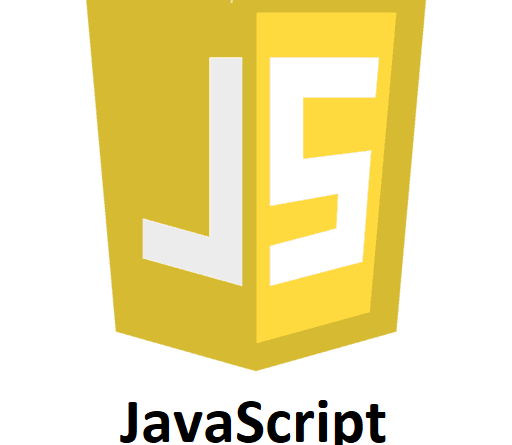Beginners Guide to JavaScript | JS (FREE! Ep. 29)
- This article shall give you JavaScript online guide, tutorial, online courses for anyone.
- There are 51 videos from what JavaScript is till how to do package management. Not only just theories, you’ll find also demos showing the how to implement them.
- For other FREE! offerings, do check FREE! section on JILAXZONE.
Gathered across various sources around the world and from the internet, here I share with you all the FREE! stuffs – products or services – that I found them interesting. Some of them are totally FREE! while some of them are just temporarily FREE! So be sure to get/download/consume them while they are FREE!

This time is online courses from Microsoft on JavaScript for beginners. Wikipedia description on JavaScript which typically abbreviated as JS, is a programming language that is high-level, often just-in-time compiled, and multi-paradigm. It has curly-bracket syntax, dynamic typing, prototype-based object-orientation, and first-class functions. Alongside HTML and CSS, JavaScript is one of the core technologies of the World Wide Web. JavaScript enables interactive web pages and is an essential part of web applications. The vast majority of websites use it for client-side page behavior, and all major web browsers have a dedicated JavaScript engine to execute it. So JavaScript sounds important right? Indeed it is!
This online courses are good for someone who wants to learn JavaScript without any background out of it before. From the description on what JavaScript is, basic syntaxes, to data types and package managements. The courses also come with demo so you have better understanding on each topic given. Without further ado, here they are.
For other episodes of FREE!, check them here: FREE! All Episodes.
JavaScripts for Total Beginner
There are 51 videos from Microsoft for you to learn JavaScript. While the recommendation is to follow the sequence here, but if you think you have mastered some of the topics here, feel free to jump around. Enjoy!
1) Introduction: Beginning the Beginner’s series
If you’re curious about JavaScript and not sure where to start we’re here to help. We’ve gathered some amazingly talented people to help get you up to speed on one of the most popular programming languages in the world. We begin by talking about who we are and laying the foundation for the rest of the course.
2) What Is JavaScript
If you’re not familiar with JavaScript this is a perfect place to start. We’ll chat through what JavaScript is, the history, and the types of applications you can create with JavaScript.
3) Running JavaScript: browser or server
JavaScript is an interpreted language. As a result, where it executes has an impact on what resources are available and what you’re able to do. Here we’ll highlight the key differences, and what to expect when you decide to look at client code.
4) Building your toolbox
JavaScript is an interpreted language. As a result, where it executes has an impact on what resources are available and what you’re able to do. Here we’ll highlight the key differences, and what to expect when you decide to look at client code.
5) Demo: Building your toolbox
Every craftsperson needs a toolbox, and this is no different for a developer. You’ll need to have both Node.js installed to run your code, and an editor, such as Visual Studio Code, to create and edit it. We’re going to talk through what you’ll need and where to find it.
6) Creating your first application
Hello, world! All applications start somewhere. We’re going to show you how to create your first application. Every application will always start here – with a folder and an editor.
7) Comments
Comments are a great way to document your code, both so you and others know what’s going on, but also as a way of taking notes. JavaScript offers a couple of ways to create comments, and we’ll show you both.
8) Demo: Comments
Comments are a great way to document your code, both so you and others know what’s going on, but also as a way of taking notes. JavaScript offers a couple of ways to create comments, and we’ll show you both.
9) Declaring variables
Variables allow you to store pieces of information and are core to programming. How you declare variables in JavaScript has a large impact on how the variable will work and the changes you are (and aren’t) allowed to make to it. We’ll show you how to declare variables, and the best practices.
10) Demo: Declaring variables
Variables allow you to store pieces of information and are core to programming. How you declare variables in JavaScript has a large impact on how the variable will work and the changes you are (and aren’t) allowed to make to it. We’ll show you how to declare variables, and the best practices.
11) Working with strings
One of the core actions performed in code is working with strings. We’ll show off how to combine and concatenate strings.
12) Demo: Working with strings
One of the core actions performed in code is working with strings. We’ll show off how to combine and concatenate strings.
13) Using template literals to format strings
Performing more complex operations to bring strings together becomes difficult with a bunch of plus signs. Fortunately, JavaScript offers a great formatting syntax, allowing you to create a template and indicate how strings should be combined.
14) Demo: Using template literals to format strings
Performing more complex operations to bring strings together becomes difficult with a bunch of plus signs. Fortunately, JavaScript offers a great formatting syntax, allowing you to create a template and indicate how strings should be combined.
15) Data types in JavaScript
While JavaScript is a weakly typed language, it still stores the variable type (such as number or string). We’ll walk through the concept of what a weakly typed language is, and how the system works in JavaScript.
16) Demo: Data types in JavaScript
While JavaScript is a weakly typed language, it still stores the variable type (such as number or string). We’ll walk through the concept of what a weakly typed language is, and how the system works in JavaScript.
17) Math in JavaScript
It’s hard to imagine an application where there isn’t some level of math involved. Like any programming language, you can do all the math in JavaScript. We’ll show off some of the common operations and options.
18) Demo: Math in JavaScript
It’s hard to imagine an application where there isn’t some level of math involved. Like any programming language, you can do all the math in JavaScript. We’ll show off some of the common operations and options.
19) Converting strings to numbers
When working with data from outside of your application it may not be automatically read as the data type you expect. This can cause problems when you’re expecting a number but JavaScript treats it as a string. See how you can convert strings to numbers.
20) Demo: Converting strings to numbers
When working with data from outside of your application it may not be automatically read as the data type you expect. This can cause problems when you’re expecting a number but JavaScript treats it as a string. See how you can convert strings to numbers.
21) Handling errors with try/catch/finally
Whenever code is executing there’s always a chance something may go wrong. Allowing your application to log the error, and potentially exit gracefully, is important. We’ll show how you can use try/catch/finally to handle errors in JavaScript.
22) Demo: Handling errors with try/catch/finally
Whenever code is executing there’s always a chance something may go wrong. Allowing your application to log the error, and potentially exit gracefully, is important. We’ll show how you can use try/catch/finally to handle errors in JavaScript.
23) Dates
Working with dates and time can be a little tricky. JavaScript offers quite a bit of support for working with and manipulating this type of data. We’re going to highlight how you can create dates and times, work with the various components.
24) Demo: Dates
Working with dates and time can be a little tricky. JavaScript offers quite a bit of support for working with and manipulating this type of data. We’re going to highlight how you can create dates and times, work with the various components.
25) Boolean logic with if statements
Applications make decisions. The core to any decision making is branching using an if statement. We’re going to talk through how Boolean values work, and the core syntax for if statements.
26) Demo: Boolean logic with if statements
Applications make decisions. The core to any decision making is branching using an if statement. We’re going to talk through how Boolean values work, and the core syntax for if statements.
27) Boolean logic with switch and other syntax
Beyond the core syntax for if statements, JavaScript offers a couple of different ways to write it, and provide multiple branches using a concise form of syntax known as a switch statement. We’ll show off the different options available to you.
28) Demo: Boolean logic with switch and other syntax
Beyond the core syntax for if statements, JavaScript offers a couple of different ways to write it, and provide multiple branches using a concise form of syntax known as a switch statement. We’ll show off the different options available to you.
29) Creating arrays
Arrays allow you to store multiple items in one variable. We’ll start this video set by showing how you can create an array.
30) Demo: Creating arrays
Arrays allow you to store multiple items in one variable. We’ll start this video set by showing how you can create an array.
31) Populating arrays
Once an array is created it needs data. And we need to be able to retrieve the data. We’ll show off how to add data to an array, and how indexes work to find specific values.
32) Demo: Populating arrays
Once an array is created it needs data. And we need to be able to retrieve the data. We’ll show off how to add data to an array, and how indexes work to find specific values.
33) Array methods
There are numerous methods to use with arrays which allow you to manipulate the data or the entire array. We’ll highlight some of the most common operations.
34) Demo: Array methods
There are numerous methods to use with arrays which allow you to manipulate the data or the entire array. We’ll highlight some of the most common operations.
35) Loops
The ability to perform an operation multiple times in an application is an important one. JavaScript offers a few different ways to do this, with the three most common being for, for of, and while. We’ll walk you through each one and highlight when to use each.
36) Demo: Loops
The ability to perform an operation multiple times in an application is an important one. JavaScript offers a few different ways to do this, with the three most common being for, for of, and while. We’ll walk you through each one and highlight when to use each.
37) Functions
Functions are probably the most powerful tool in the developer’s toolbox. They allow you to take a block of code, put a name on it to make it clear what it does, and then call it as often as you need. We’ll show off how you can create functions using the classic JavaScript syntax.
38) Demo: Functions
Functions are probably the most powerful tool in the developer’s toolbox. They allow you to take a block of code, put a name on it to make it clear what it does, and then call it as often as you need. We’ll show off how you can create functions using the classic JavaScript syntax.
39) Arrow and anonymous functions
JavaScript offers the ability to pass functions into functions for callbacks and other purposes. While this can be done by using the classic syntax, it can be a little verbose. We’ll highlight how you can create arrow (sometimes called “fat arrow”) functions to help make your code a little terser.
40) Demo: Arrow and anonymous functions
JavaScript offers the ability to pass functions into functions for callbacks and other purposes. While this can be done by using the classic syntax, it can be a little verbose. We’ll highlight how you can create arrow (sometimes called “fat arrow”) functions to help make your code a little terser.
41) JavaScript Object Notation (JSON)
The flexibility of JavaScript allows you to create objects on the fly to suit your needs. One common way to do this is through JavaScript Object Notation or JSON – so common in fact it’s become a common standard. We’ll show off how you can use JSON to create and manipulate objects in JavaScript.
42) Demo: JavaScript Object Notation (JSON)
The flexibility of JavaScript allows you to create objects on the fly to suit your needs. One common way to do this is through JavaScript Object Notation or JSON – so common in fact it’s become a common standard. We’ll show off how you can use JSON to create and manipulate objects in JavaScript.
43) Objects in JavaScript
JavaScript allows you to do more with objects than simply create data structures. You can create fully functional objects with methods and state. This allows you to better represent information and operations in your code. We’ll see how you can use objects in JavaScript.
44) Demo: Objects in JavaScript
JavaScript allows you to do more with objects than simply create data structures. You can create fully functional objects with methods and state. This allows you to better represent information and operations in your code. We’ll see how you can use objects in JavaScript.
45) Promises for long running operations
Calls to databases and other external services can take a while. We need to ensure the application doesn’t cease all operations while those complete. By using promises we can allow for better thread management and ensure our application stays responsive and has better performance.
46) Demo: Promises for long running operations
Calls to databases and other external services can take a while. We need to ensure the application doesn’t cease all operations while those complete. By using promises we can allow for better thread management and ensure our application stays responsive and has better performance.
47) Async/await for managing promises
A new pattern of using async/await syntax for managing promises is increasing in popularity. We’ll show off how you can use async/await to make your code appear synchronous while performing asynchronous operations.
48) Demo: async/await for managing promises
A new pattern of using async/await syntax for managing promises is increasing in popularity. We’ll show off how you can use async/await to make your code appear synchronous while performing asynchronous operations.
49) Package management
Applications frequently have the same set of core requirements. Rather than creating your own solutions, you can instead bring in packages created by others. See how you can add, manage and access packages in your applications.
50) Demo: Package management
Applications frequently have the same set of core requirements. Rather than creating your own solutions, you can instead bring in packages created by others. See how you can add, manage and access packages in your applications.
51) Next steps
Now that you’ve watched all the videos (or maybe skipped to the end) you’re probably wondering where to go from here. We’ve put together some great resources for you to peruse, and some links to tutorials you can use to help grow your skills. You’ve made it this far; we’re going to point you in the right direction for your future path.
Not enough FREE! stuffs here?
Browse FREE! section at JILAXZONE for more FREE! contents and stuffs! While some of the FREE! contents are available within limited time and period only but many are still available as always FREE!
Do you have anything you want me to cover on my next article? Write them down on the comment section down below.
Alternatively, find more interesting topics on JILAXZONE:
JILAXZONE – Jon’s Interesting Life & Amazing eXperience ZONE.
Hi, thanks for reading my curated article. Since you are here and if you find this article is good and helping you in anyway, help me to spread the words by sharing this article to your family, friends, acquaintances so the benefits do not just stop at you, they will also get the same goodness and benefit from it.
Or if you wish, you can also buy me a coffee:

Thank you!
Live to Share. Share to Live. This blog is my life-long term project, for me to share my experiences and knowledge to the world which hopefully can be fruitful to those who read them and in the end hoping to become my life-long (passive) income.
My apologies. If you see ads appearing on this site and getting annoyed or disturb by them. As much as I want to share everything for free, unfortunately the domain and hosting used to host all these articles are not free. That’s the reason I need the ads running to offset the cost. While I won’t force you to see the ads, but it will be great and helpful if you are willing to turn off the ad-blocker while seeing this site.



